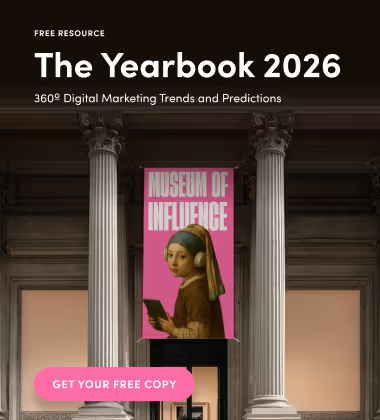Your caption space is small. The attention span you’re competing with is even smaller. But that’s what makes Instagram storytelling such an art. When it’s done right, even a few short lines can stick. They stop the scroll, hit a nerve, or pull someone a little closer.
What makes the difference is structure. A caption with a solid storytelling framework lands harder, it flows better. Most importantly, it makes people care. Below are seven narrative styles you can adapt, bend, and experiment with in your own posts. Each one was made for small spaces and big emotions, yet they don’t feel restricted.
1. The Micro Three-Act Structure
Classic, efficient, satisfying. Set the scene, introduce a tiny conflict, then resolve it with a twist, lesson, or laugh, all within three to five lines. For example: I almost didn’t post this. This shoot went sideways from the first click. But sometimes the imperfect shots say the most.
Use this for anything that has movement, a process, a day in the life, or even a messy outfit story. The rhythm does the work; it draws the reader in without needing to explain too much.
2. Hook → Shift → Snap
Start strong. Swerve. Stick the landing.
This one’s built for attention spans and surprise endings. It’s especially effective with carousel posts, reels, or even time-lapse content. Hook the reader with something specific or strange. Shift the tone or expectation midway. Snap it closed with a punchline, a mic drop, or a reflective truth.
Use this for unexpected moments, honest takes, or product reveals that come with a human twist. The real power of this structure is its rhythm. It gives even casual scrolls a cinematic edge.

Image Source: Shutterstock
3. Before → After → Insight
The transformation post, but with heart. Don’t just show the change; say something about what changed you. This is a favorite in founder storytelling, weight loss journeys, healing narratives, and creative growth updates.
It reads like:
- Here’s who I was.
- Here’s what changed.
- Here’s what I understand now.
This format makes growth feel real and grounded. It works because it’s honest, and people crave that. If you’re ever in doubt about how to start writing, remember that the same formula helps with longform, too. This framework saved me many times when I was trying to write my essays for a course. Structure builds clarity.
4. The One-Line Setup
Sometimes all you need is a single sentence. One that hits hard, feels personal, or sparks curiosity. Try lines like, “She never knew I took this photo,” “It looked like an accident. It wasn’t.”
This framework leans heavily on the photo to do the storytelling. The caption becomes a window, not a full scene. A single line that lingers can sometimes say more than a paragraph. The magic is in the restraint: writing just enough, and letting the silence do the rest.
5. Flashback Framework
Start in the now. Rewind. Then bring it back. This structure pulls the reader through time. It works beautifully for reflective content, especially posts about grief, growth, or firsts. You give the moment meaning by anchoring it in memory. A photo might show the result, but the caption reveals the journey behind it.
Mark Bradford, a narrative strategist and education expert from the essay writing service EssayHub, explains it this way: “In writing and content, time is a tool for emotional pacing. We teach this in storytelling workshops the same way we teach students to pace a personal statement.”
Time makes meaning. Memory isn’t just background; it’s structure.
6. Question → Reveal → Close
Start with something the reader might secretly ask themselves. Answer it honestly from your experience, then close with a thought or takeaway.
For example, ”What if I told you I hated this dress when I bought it? I did. It felt too loud. Too ‘not me.’ But I wore it anyway. Now I wear it on the days I need to feel like the loudest one in the room."
This one works well when paired with a static photo or a moment that doesn’t look dramatic until the words shift the lens. The structure opens with vulnerability and ends with quiet confidence.
7. Parallel Mini-Stories
Tell two stories that mirror or contrast each other. They don’t have to be dramatic. The magic is in the comparison.
Example:
- “2018: Coffee in a paper cup, job I hated, train delays every morning”
- “2023: Coffee in a paper cup, work I love, train delays every morning”
- “Some things change. Some don’t. But the way I sit with them feels better now”
Use this when you want to reflect, compare, or show quiet growth without being heavy-handed. Parallel captions let you say two things at once, and readers love the mental leap.
Caption Frameworks Aren’t Rules, They’re Tools
Instagram captions are story fragments, and the best ones feel like they’re told by someone who knows exactly what they want to say. These frameworks don’t lock you in. They give you shape. They let you experiment, get weird, get honest, and hit emotional beats faster.
You don’t need an essay to make a connection. Sometimes, three lines are all it takes. But those lines? They’re built with care: real voice, real craft, and a structure sturdy enough to carry the message that matters.
Quick Recap
- Instagram storytelling is about structuring short captions to evoke emotion and connection.
- Frameworks like Micro Three-Act, Hook → Shift → Snap, and Parallel Mini-Stories make writing easier and more effective.
- Short captions don’t mean shallow content. When structured well, they carry weight.
- Storytelling captions work across content types: reels, carousels, stills, and behind-the-scenes.
- These frameworks can be adapted to fit your voice, tone, and brand personality.



